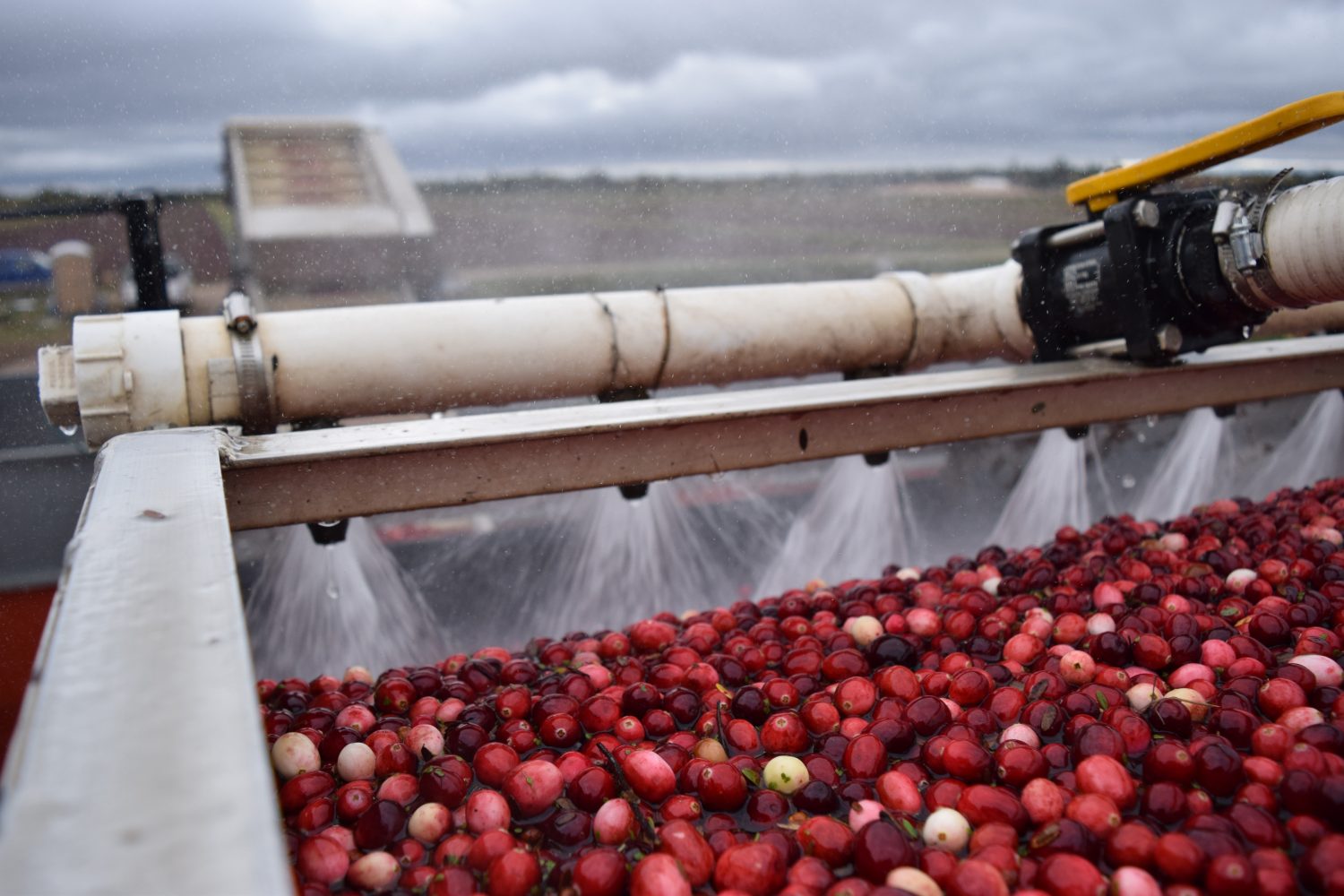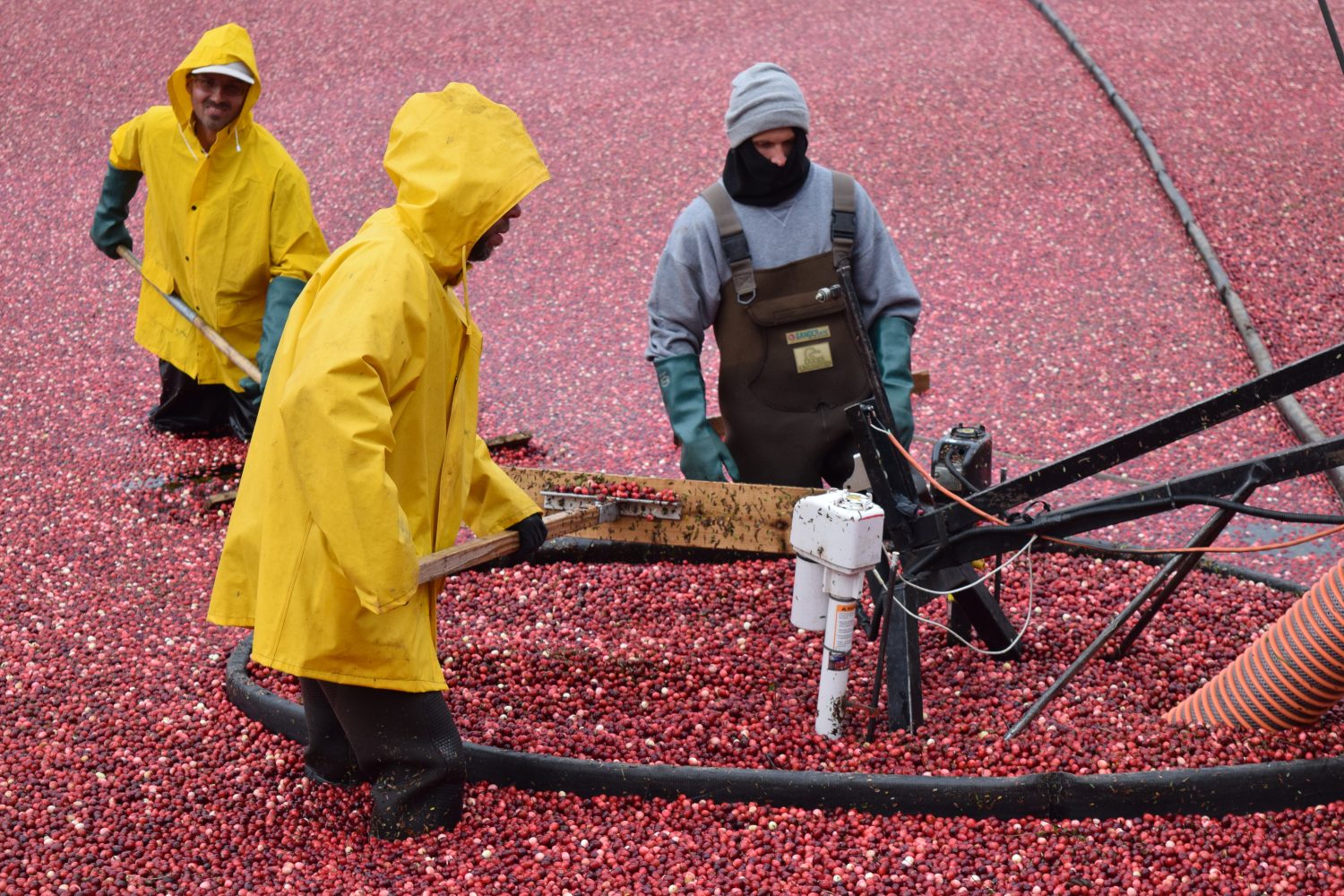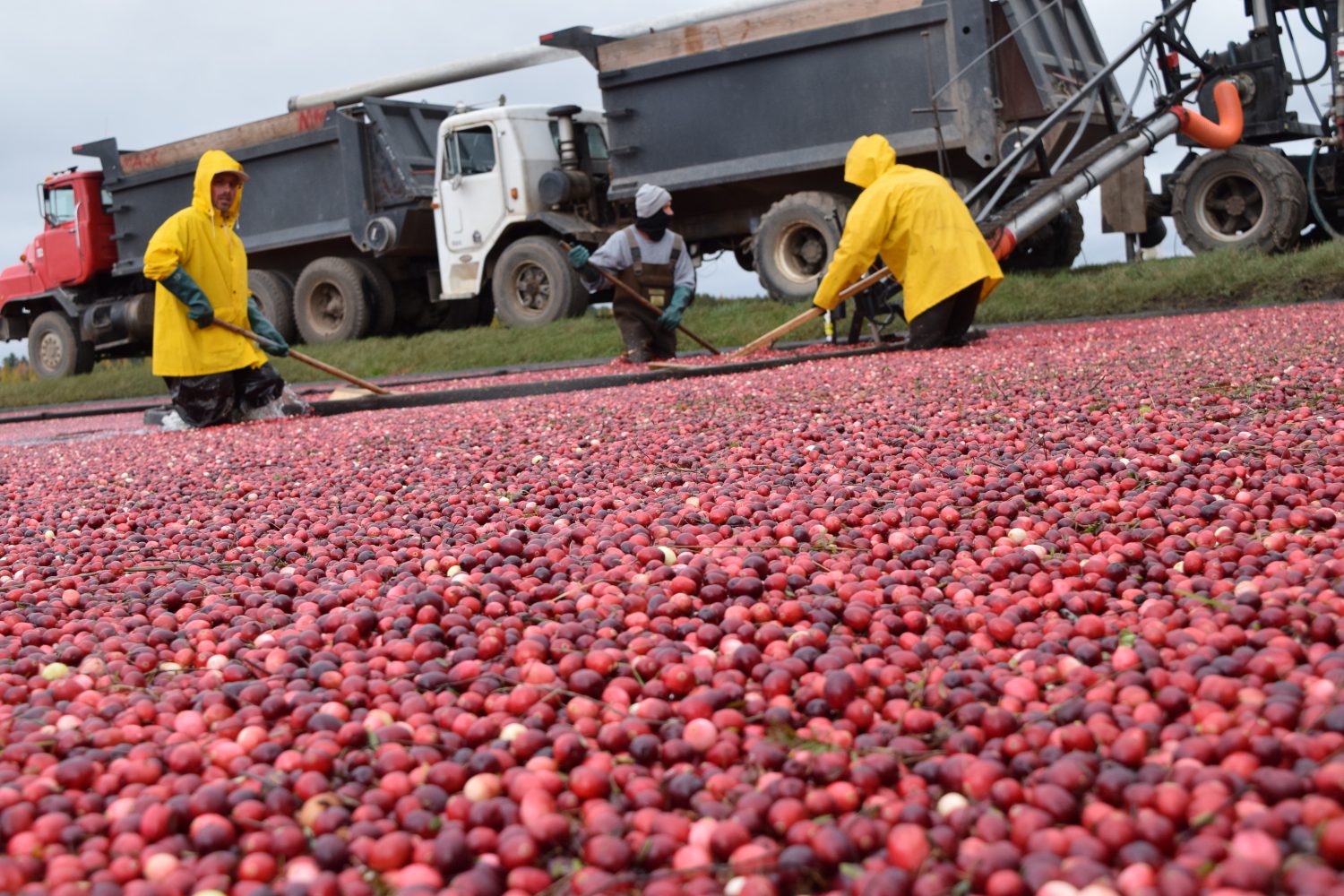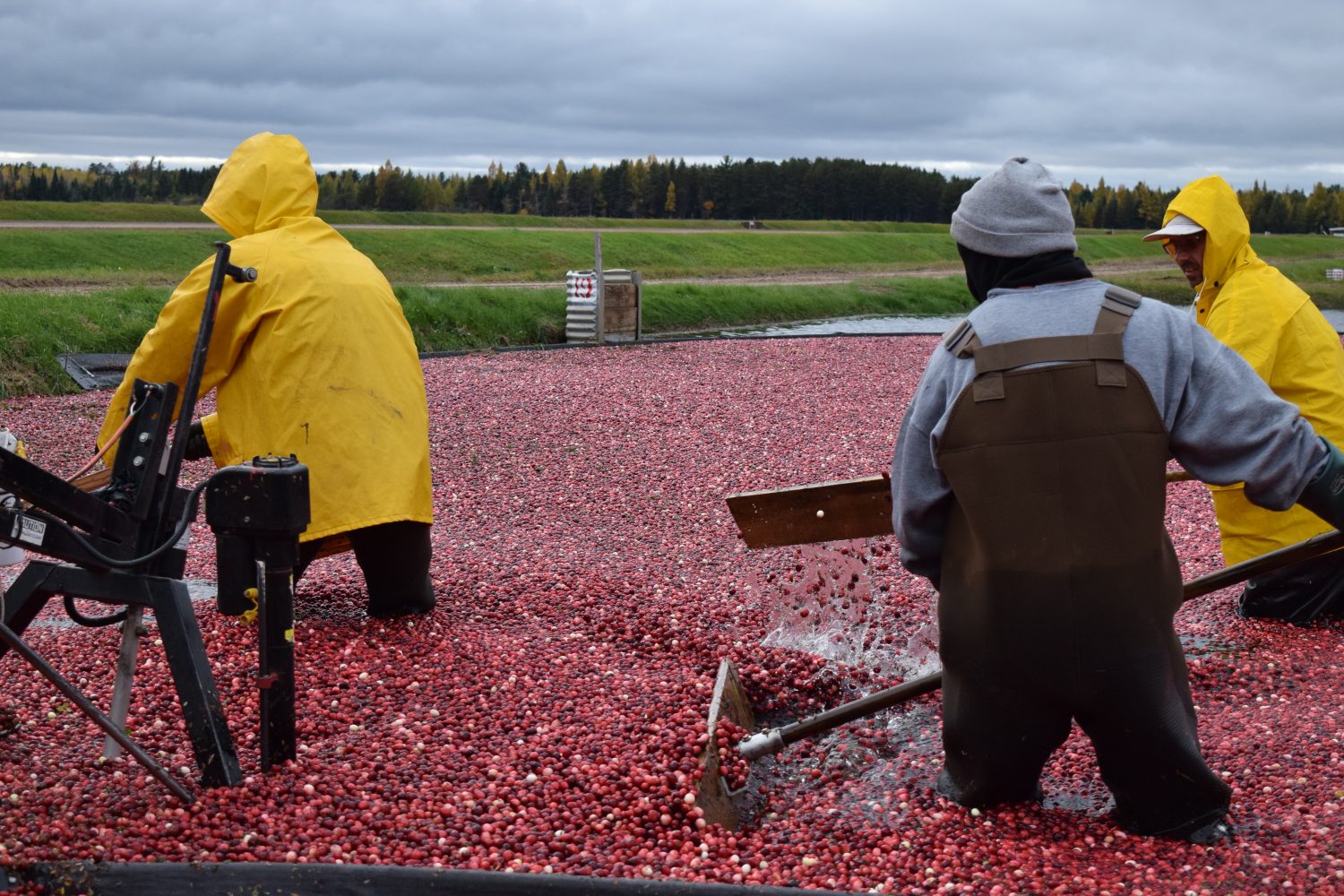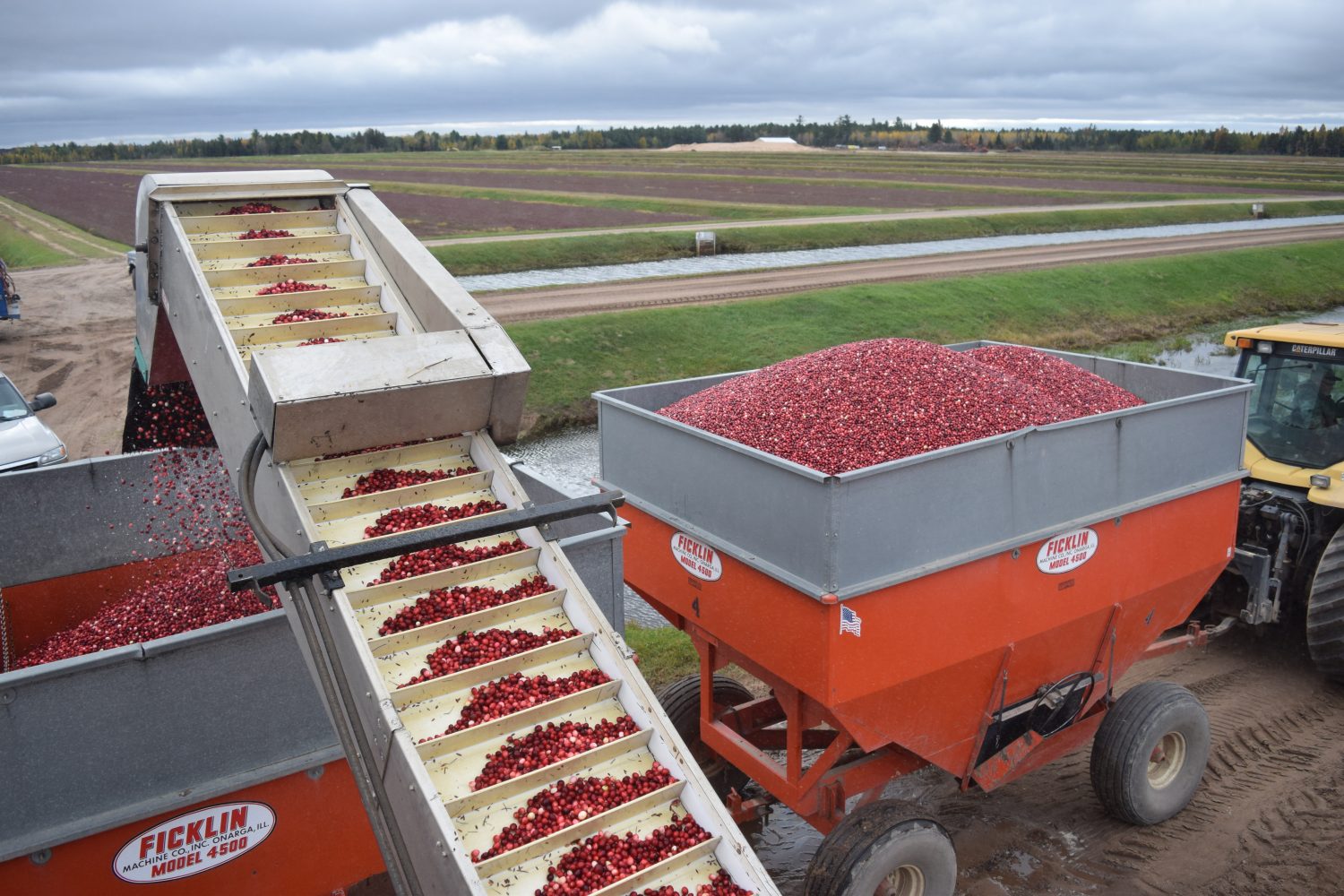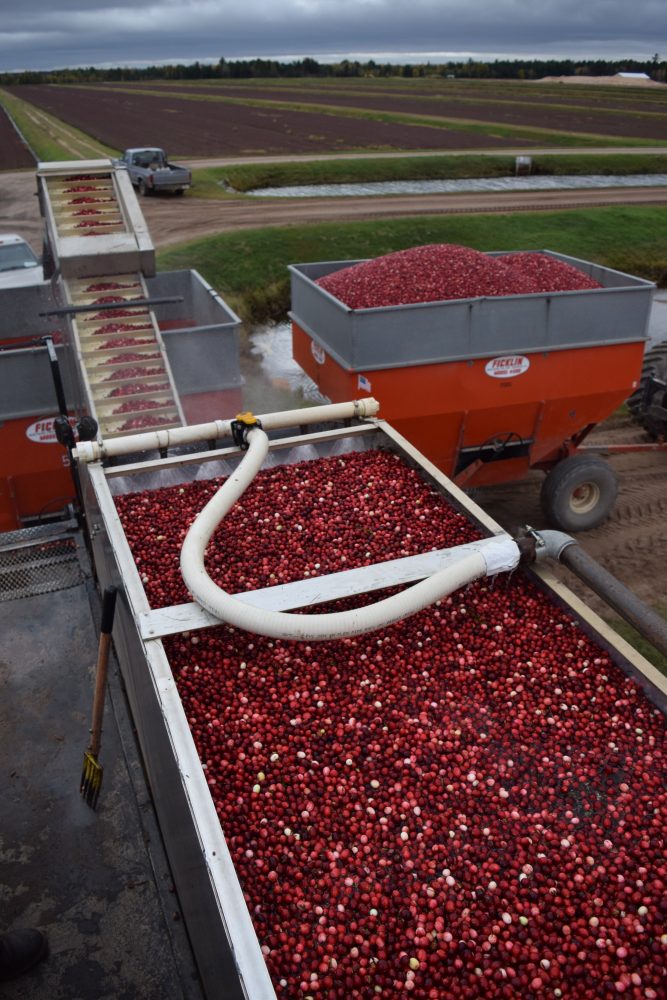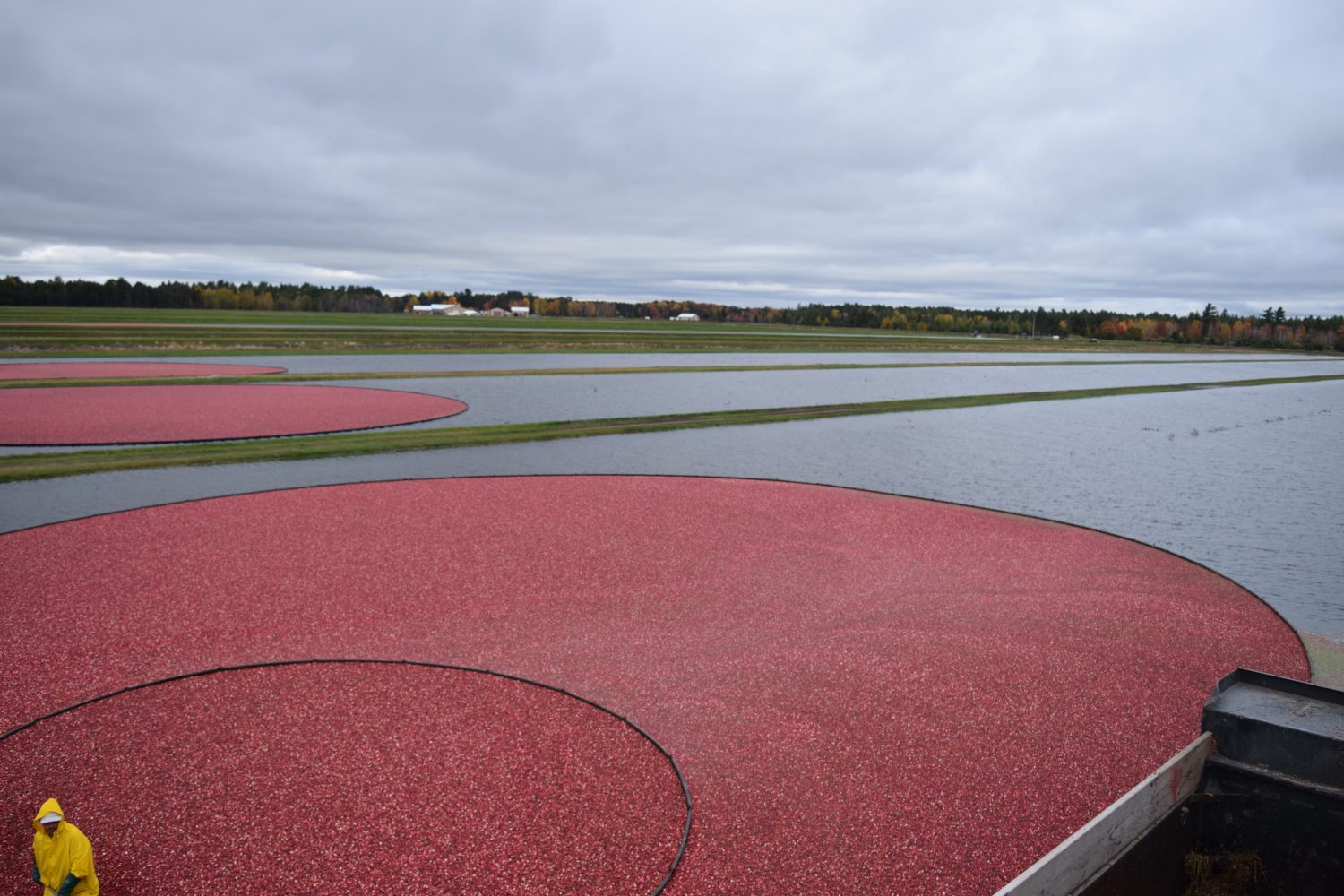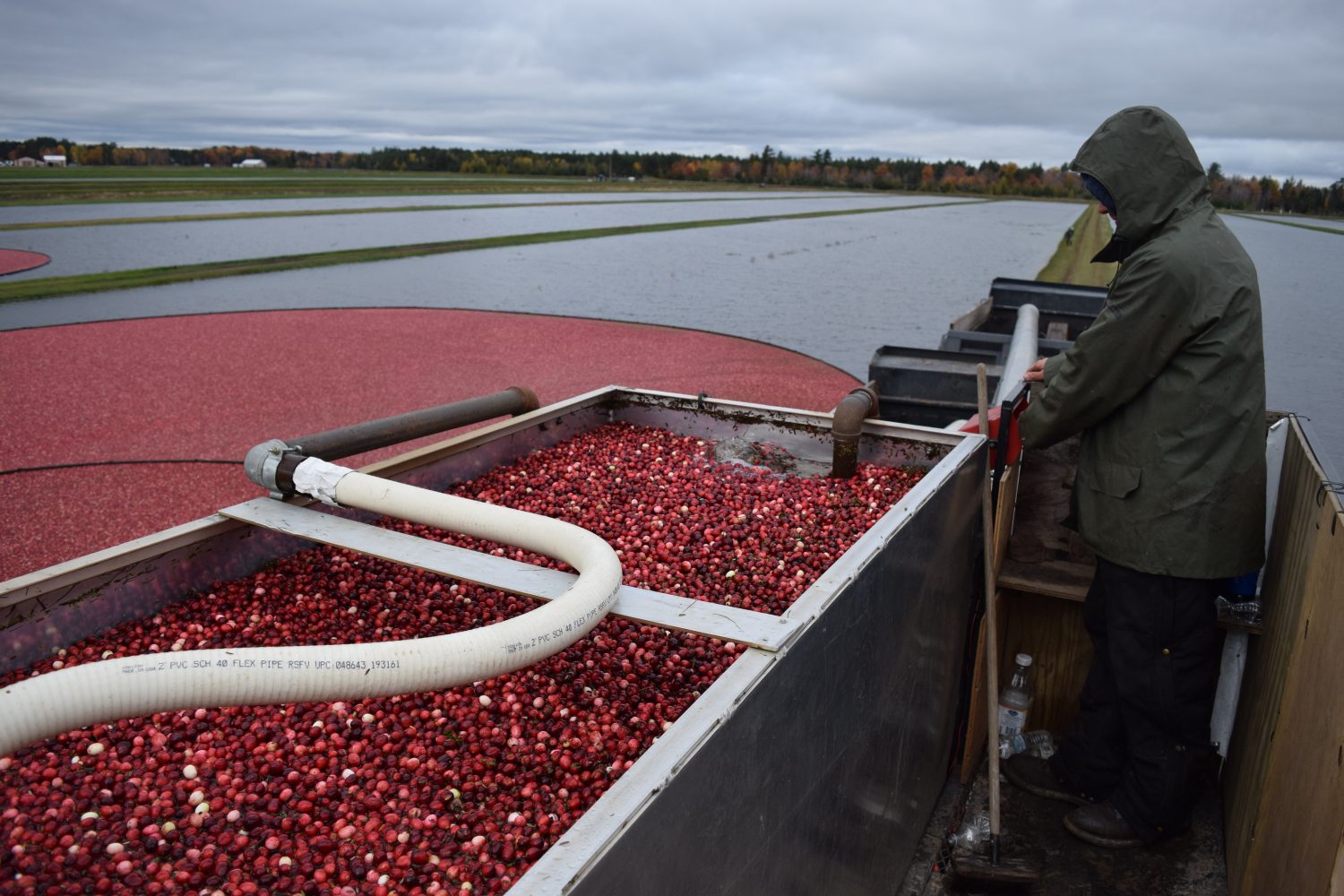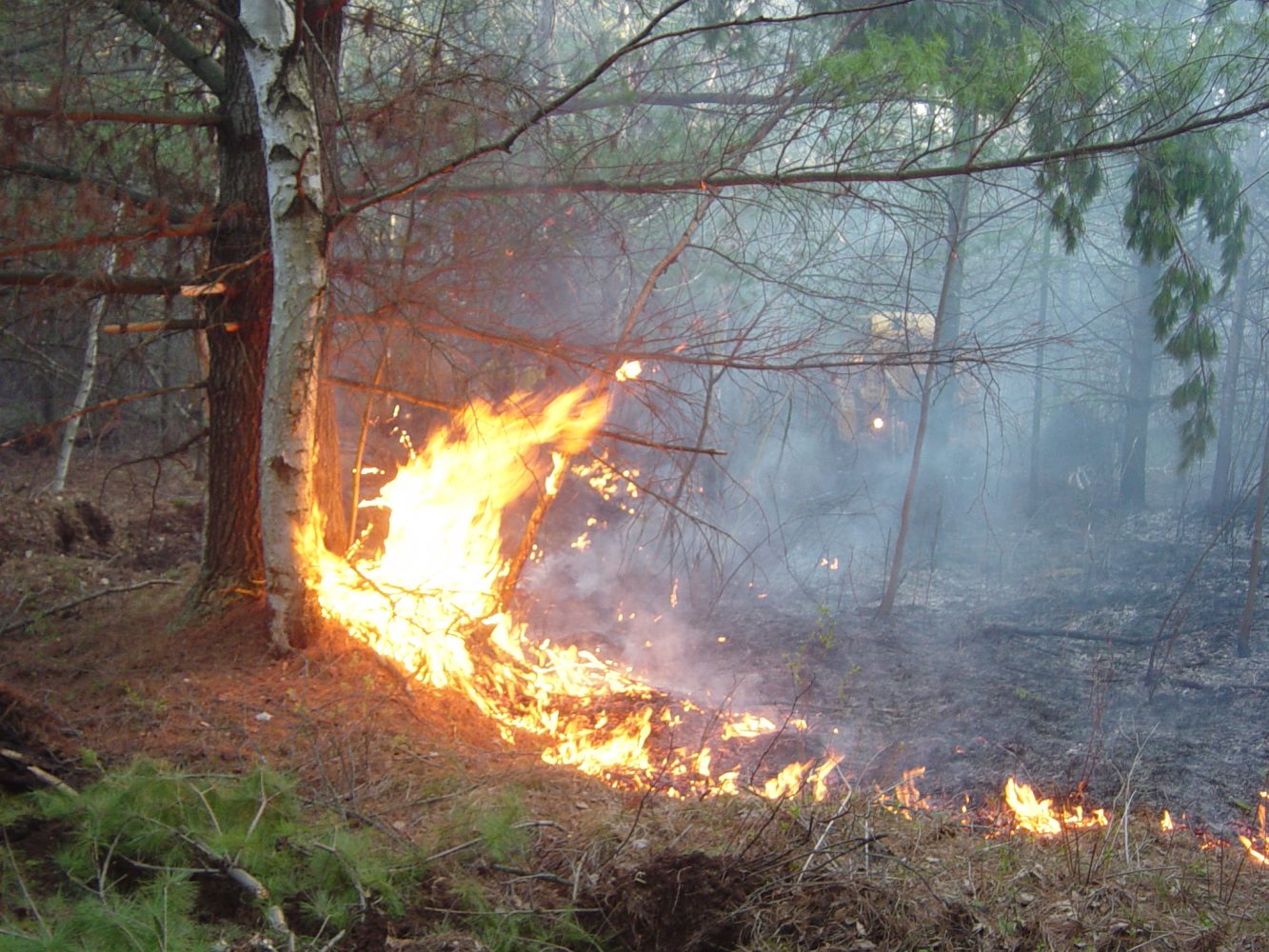Cranberry harvest comes to an end

Debunking myths and misconceptions about Wisconsin’s oldest fruit
By Jared Raney
Reporter
The cranberry is perhaps the most misunderstood fruit around, which is surprising given that the U.S. accounts for about 3/4 of all the world’s cranberries. Even more surprising here in Wisconsin, the state that produces well over half of the nation’s cranberry yield. (wiscran.org)
Though it doesn’t quite make the top of the list when people think about what Wisconsin is known for, the industry has a huge economic impact, producing approximately 5 million 100-pound barrels each year.
Misconceptions about the state’s most important fruit are numerous, the most common that cranberries grow in water. In fact, cranberries grow best in sand or peat.
The fields are flooded during harvest because cranberries float, and the easiest way to pick them is to run a clipping machine right underneath the floating berries, then use a giant pump to suction them out of the water.
Many people also don’t know that cranberries, for most of their growth period, are white. They turn red as they ripen, which is why you’ll occasionally see a few white berries floating around with the reds.
The reason Wisconsin is so crucial to the cranberry industry is its climate. Cranberry plants have a natural dormancy period, which makes them perfect for cold climates. In the winter, bogs are flooded and frozen over, giving the cranberry buds a protective ice cap. The water is sucked out from underneath, and the plants stay mostly dry all winter long.
Water availability is also key. Growers need ample water supplies, not only for harvesting, but the fields are irrigated for frost protection during harvest season as well.
“Cranberry growers in general, but I’m more focusing on Wisconsin, are very proactive,” said Michael Brian, manager of Lake Nokomis Cranberries. “There is that aspect in the cranberry industry, but that’s only part of the story. The other part is the stewardship when it comes to the water and the land. And that’s ongoing, constantly. So we definitely want to protect what we have.”
Their complex growing periods make for plenty of ups and downs. So far this year Brian said the cranberry yield is lower than expected, which could be due to last year’s early winter, when this year’s buds were setting up.
Another impact on the cranberry industry has been the “added sugar problem,” Brian said.
“Sugar is demonized right now, but if you want to enjoy the health aspects of cranberries, and you don’t want the tart taste, you’ve got to have a little bit of sugar in it,” Brian said. “And so they’re balancing it, they’re using natural sugar now—I say natural; beet or cane sugar… so they’re trying different thigns to battle that sugar stigma.”
Of course, you can’t mention cranberries without talking about how healthy they are. Beneficial effects of cranberry have been recognized for centuries—long before Europeans settled America. Today, those effects are backed by research, which is why more than 1,000 food and beverage products contain cranberries. (wiscran.org)
For more information, go to wiscran.org or contact Lake Nokomis Cranberries to schedule a tour of their cranberry fields.
Leave a reply
You must be logged in to post a comment.

